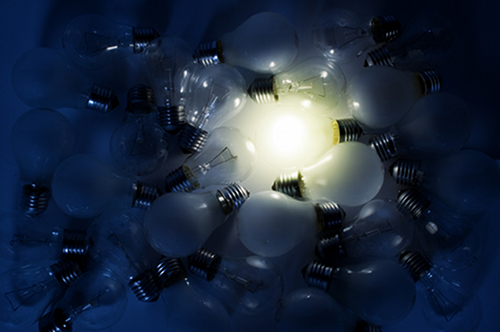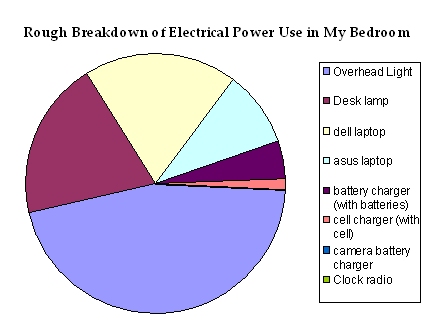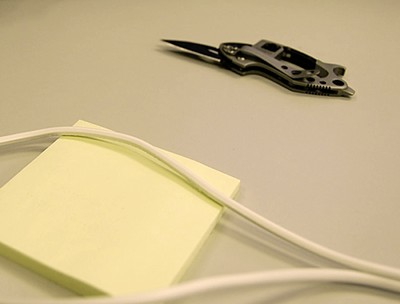-My sister, in reference to the first post So
far, I've spent a lot of time dreaming up plans for monitoring
power use. But before I dive into particulars, I want to draw a bit of the big picture.
According to the
U.S. Department of Energy,
U.S. residents used a little less than 100,000 kilowatt-hours per person in 2007.
That much energy could power almost 1,000,000 100-watt lightbulbs for an hour.

Qwasyx/istockphoto.com
Here's another way to think of it. We'd have to burn 8 gallons of gasoline, per person, per day to generate that much energy.
The DOE site
mentioned that energy consumption data was collected by the
EIA--The Energy Information Administration, but I wasn't able to dig up the numbers and method behind those figures. So I'm not sure if
the above information includes all aspects of a person's energy use, or
just what they use at home. (Another DOE page suggested that over a
quarter of the average person's energy use comes from transportation.)
For this project, I decided to divide my energy use into three main sectors: home, work and transportation.
At HomeIn general,
about half
of home power use goes toward heating and cooling a living space.
Lighting takes the next big slice out of the pie, then refrigeration,
water heaters, various small appliances, and so on down the line.
I'm curious to see what the most power hungry part of my home will be. I'll check out the energy used by small and large appliances and keep an eye on our gas and electricity meter.
I spent some time trying to decide if hot water use was relevant enough. The
government convinced me that it's worth looking into. So I'll be taking that into account as well.
At WorkAs you might expect, my employer is pretty
environmentally conscious.
We have a rooftop garden, low-flow toilets, and the lights in the
office are governed by motion-sensors. (As I was writing this, they
flipped off. I guess everyone was being extraordinarily still. A bit of
jumping around was needed.)
In the interest of fairness, I plan
to ignore all the good measures taken by WGBH and focus in on my
prodigal personal space. I'll be monitoring the energy used by my
computer and various other electronics (basically anything that
wouldn't be running if not for my button pushing.) This includes the
toaster, microwave, coffee maker, and, of course, the elevators.
TransportationThis section is the least defined for now. In kinder
weather I commute by bike, but recent snowstorms have driven
me to the bus, subway and the occasional ride from car-owning friends.
This one needs a bit more thought and will get its own post.
I'll
update a bit more as I start to get readings on different appliances
around the workplace and at home. Next post, I'll say a bit more about
how I'm getting those numbers and introduce you to my new friend--the
multimeter.
The stopwatch, by the way, along with a recently
acquired bucket, is for measuring hot-water use. I'm not looking
forward to week two (the conservation phase of the experiment) on that
one.














